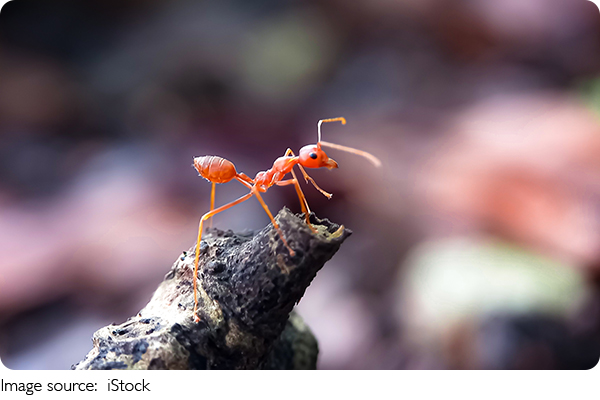How Ants Communicate

Have you ever watched a trail of ants marching in a perfect line and wondered how they manage to work together so efficiently? From finding food to defending their colony, ants are masters of cooperation and communication.
They don't rely on words, yet their level of organization is incredibly sophisticated. So, how do they manage all of this?
Let's explore the world of ants and discover how they organize their colonies and communicate with each other.
Ant Colonies: A True Community
Ants live in highly organized colonies, and each ant has a specific role. From workers to guards, and even queens, every member of the colony contributes to the survival and success of the group. But how do they know what to do? How do they all work together without confusion?
Ant colonies can range from a few dozen ants to millions, depending on the species. Despite their size, ants function like a well-oiled machine, with each ant following simple rules that contribute to the larger goal of colony survival. They are one of nature's best examples of a true community.
Ant Roles Within the Colony
Workers: These ants are the colony's labor force. They are responsible for tasks like gathering food, cleaning the nest, and caring for the queen's offspring.
Defenders: These are the protectors of the colony. They have bigger jaws and are more robust than the workers, designed to defend the colony from predators.
Queen: The queen is the heart of the colony. She is the only ant that lays eggs and ensures the colony's continuation. Without her, the colony would collapse.
Despite their differences, all ants in a colony work together seamlessly. So, how do they manage to stay so coordinated? The answer lies in their communication.
How Ants Communicate: The Power of Pheromones
Ants communicate primarily through chemical signals known as pheromones. These chemical messages are released from glands in the ant's body and can convey all sorts of information, from marking a trail to signaling an alarm.
Here's how it works:
Leaving a Trail: When a worker ant finds food, it leaves a trail of pheromones on the ground as it returns to the colony. Other ants detect this trail and follow it, which leads them to the food source.
Alarm Signals: If an ant encounters danger, it releases alarm pheromones that trigger nearby ants to come to its aid or avoid the area.
Recruitment: Ants also use pheromones to recruit other ants to tasks. For example, if a worker ant finds a large food source, it can leave a strong pheromone trail to attract more ants to help carry the food back.
The more ants follow a particular trail, the stronger the pheromone scent becomes, guiding others to join in the effort. This process is known as positive feedback, and it's a critical part of how ants coordinate their actions.
The Importance of Ant Communication
Without their ability to communicate, ants wouldn't be able to work together effectively. Their communication system helps them make decisions as a group, from choosing a new nest site to defending the colony. This decentralized decision-making process is known as collective behavior.
Decision Making: Ants employ a process called stigmergy, where individual actions modify the environment (e.g., laying pheromones), and these modifications trigger subsequent actions by others. Instead, the combined actions of individual ants lead to group-level behaviors.
Food Sharing: Once food is located, ants use pheromones to inform the rest of the colony, ensuring that food sources are shared and the colony is well-fed.
Defense and Survival: In times of danger, ants can quickly organize a defense strategy. By releasing alarm pheromones, worker ants rally to defend the nest or escape from predators.
This collective intelligence—where each ant follows simple rules but works together to solve complex problems—has allowed ants to thrive in nearly every environment on Earth.
Ants and Their Amazing Ability to Adapt
Ants have a unique ability to adapt to changing environments. Their communication system helps them make quick decisions, such as when to move to a new location or when to change tactics in defense. When faced with a challenge, ants will often work together to find a solution.
For example, if an obstacle blocks their food trail, ants will quickly re-route the trail by detecting new paths and using pheromones to guide others.
This adaptability is one reason why ants have been around for millions of years. Their ability to change and work together ensures their survival, even in harsh conditions.

Final Thoughts
Ants may be small, but their communication and organizational skills are far from it. By using pheromones, ants are able to accomplish tasks that seem impossible, from building complex nests to feeding and protecting their colonies. Their ability to work as a team—without a leader—is a powerful example of how cooperation can lead to success.
Next time you see a line of ants, take a moment to appreciate how these tiny creatures are communicating and organizing their world, one pheromone at a time.

 · Animal Team
· Animal Team